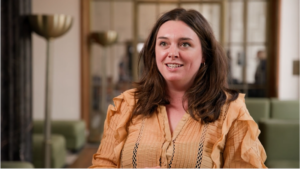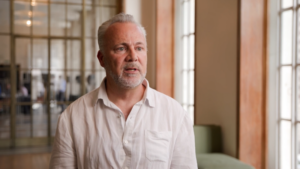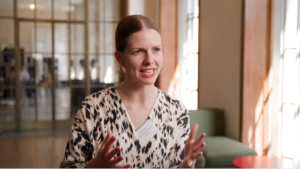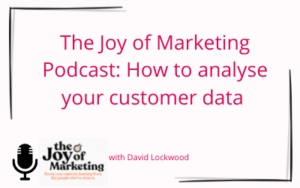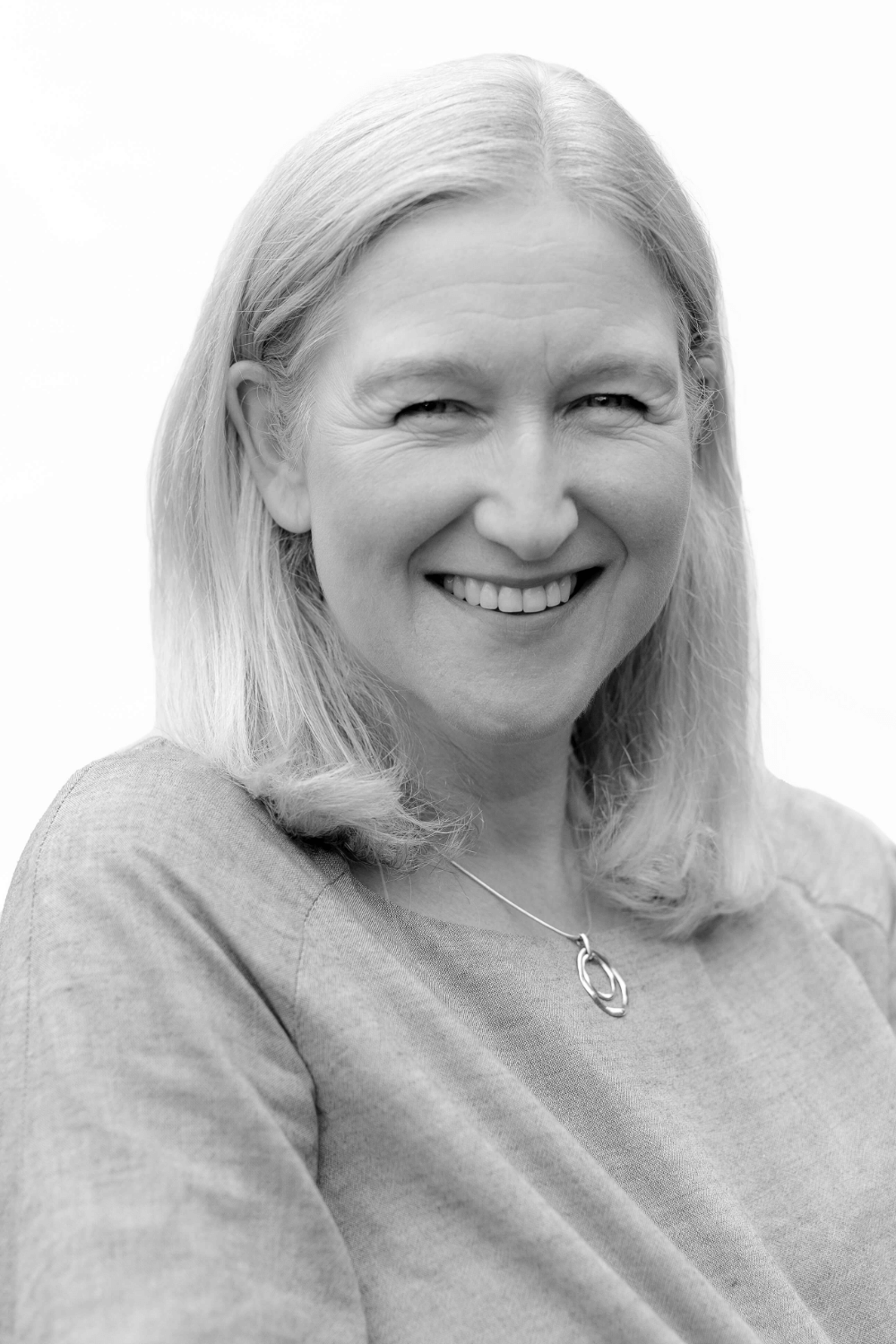A group of retail leaders met in London for a Tapestry “Free Lunch”. Post pandemic we welcome clients and potential clients back to this established, friendly get together. Free Lunches are open forum informal gatherings for senior leaders to discuss the good, bad and ugly under the Chatham House rule and chaired by our Insight Director David Lockwood. Contact us at [email protected] If you are interested in joining.
Free Lunch conversation covers a lot of ground and ranges from the macro to the micro. There are nuggets for all to take-away. This is a round-up of some of the wider conversation topics, and not necessarily the view of Tapestry.
Some background retail indicators
- Annualised national UK GDP in August is 2.5%, but the trend is expected to reduce.
- Web as % of total Retail sales is 24.2%. This is reverting to 2019 levels.
- 3 month retail sales are down -4.1% – Gifts -10%, Homeware -12%, Clothing +8% (female) (IMRG).
- Month on month retail sales are -1%. The trend is downward.
- Year on year retail sales are +5.4%. However allowing for inflation the number is probably closer to -5%.
- Adverse headwinds include climbing interest rates, material paper cost increases, Royal Mail price increase brought forward and 17 days of strikes. However digital media costs are flattening.
What Tapestry is seeing
A majority of brands are not achieving targets. One view was that “perhaps we must accept we will have smaller businesses over the next couple of years”. Margin is being squeezed across the board from extensive promotion and rising cost of goods.
Despite wide promotional activity we can see that consumers are waiting for Sales. Marketing flexibility and agility are vital attributes to drive competitive edge – as ever. Strategies to counter sales downturn include range growth and improving market share but these are difficult in the short term and invariably require additional resource.
There is much hope for Christmas and much uncertainty beyond. Many brands are hunkering down.
Naturally enough, Tapestry’s position is that we are a natural home for retailers to provide customer data driven strategic and tactical solutions that optimise spend and profit through difficult times as well as more flourishing times.
Promotions – “the promotional vortex”
One brand describes themselves as “never on sale now always on sale”. There is a widespread need to turn stock into cash. Offers are working but are tending to have a short life span, creating a perpetual promotion cycle. Email continues to be effective, always offer driven. Counter strategies include newness and to mix the offers whilst keeping to the same deal.
The Black Friday outlook is that Amazon is starting early, which means that it everyone else will too. Expectations are that promotions will be deep and wide.
Weaning off frequent promotional discounts to revert to full price and full margin is challenging. Our advice is to do this slowly to minimise risk – 0.5% to 1% margin steps at a time – and plan it over time. It is probably not the season or economic environment to do it now.
Planning and forecasting
“How to plan for a Q4 like no other after the last three Q4s like no others” is how one brand expressed the current challenge. Forecasting consumer behaviour and judging how to balance marketing spend is more difficult than ever.
Tapestry’s planning advice was to base 2022 on 2019 numbers as we emerged from strong covid growth. Actual is a step back from plan. Our sense is that there is a minimum of half a year of pain to come, likely rather longer.
A new skill is achieving a flexible supply chain in response to flexible demand. This is based around planning for 60% of budget. This will be a valuable skill in better times.
The Royal Mail (RM) strikes are troublesome, as ever. Returns are especially impacted and there are rumours of catalogues stacking at the back of some sorting centres. Agile switching from RM courier services is difficult to achieve either competitively or at pace. We advise to run RM daily courier tests, with day of the week identified on the package to measure delivery performance. Message consumers at every opportunity to convey something like “trust us we can still deliver – order early”, including emails and website check out, and providing a courier choice if possible.
Channels and media
General concern continues around the planned Google Chrome third party cookie phase out. The change affects also big players like Amazon and Meta so a solution is expected that satisfies both privacy and marketing concerns. Our general sense is that the solution will not be far from cookies.
Marketing attribution is key to marketing efficiency understanding how Customers interact across the channels, and particularly to resolve the challenge for digital marketing brands to reach traditional customers. Tapestry’s matrix solution almost uniquely measures both digital and offline channels and manages ongoing incrementality tests to ensure effective future measurement.
Reactivating covid lapsed customers is a challenge. P Max is reported as better for retention than acquisition. Facebook is working for the 60/70 demographic. Pulling back on Facebook is reported to impact all channels by more than one brand.
Feedback on retargeting and display is mixed and there is concern on accuracy of results. Epsilon-Conversant display marketing receives positive comment for being transparent and effective for both retention and acquisition – and supported by more than one brand as “the last digital spend I would pull”.
TV
TV is increasingly being tested with positive results. All Response Media are helpful. On a first test (only) it is typical to achieve double media for the spend. Use a good agency to help develop the story and manage costs which can vary significantly. Think hard about your message. Regulatory issues can affect messaging.
The first 5 minute window is a typical engagement measure (website, social). This is a tough but realistic measure, but with the certainty that there is more response to come over time. Then measure conversion. Testing indicates a long halo effect can take place. A/B test by region.
Platforms
ESPs – it can be difficult to see upside in changing ESPs. ESP change seems to be driven by cost and reporting rather than performance. Claimed features are difficult to adapt to. Klaviyo receives support for being easy to work with. There is a sense that other marketing platforms are worthy of more focus.
Payment services – again a feeling that platforms are similar with claimed features not delivering a material difference in performance or cost. PayPal and Payment Cards remain essential choices. Klana is gaining traction with one brand seeing 12% of transactions.
People
2022 has been a candidate’s market – expected to reverse in 2023 with early signs already.
Hybrid working is here to stay but concerns exist, including that WFH is task orientated and difficult to monitor. Perhaps WFH suits more experienced individuals. There is concern that younger employees are not exposed to other roles and the wider activity of the business which can be detrimental to career progression and commercial maturity – and this is often expected by the individual to be addressed by the organisation.
Tapestry – October 2022.
